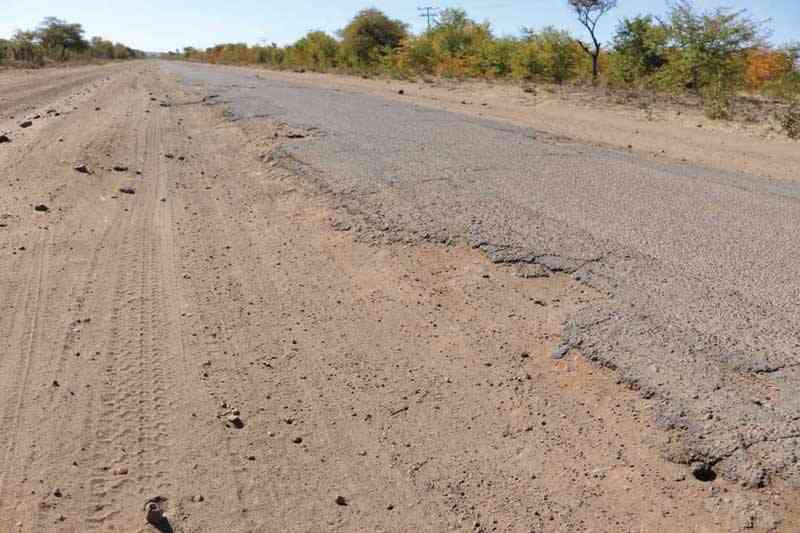
By Justice Mundonde
IN 2015, global leaders convened in Addis Ababa, Ethiopia at a conference on financing for development. Seventeen sustainable development goals (SDGs) along with 139 targets were adopted as guide posts to framing national development strategies until 2030.
SDGs endeavour to induce coherence between UN member States through working towards common targets to reduce poverty, building capability for food self-sufficiency, enhance quality of health service systems, improved quality of education, narrow the expanse of inequality, promote economic prosperity, working towards global peace and justice, mitigating the adverse consequences of climate change, and more importantly, striving towards innovation and accumulation of sustainable and resilient infrastructure.
The stock and quality of infrastructure is an important ingredient to national development given the positive impact infrastructure has in support of vital human capabilities. Fundamentally, provision of essential services such as energy, water and sanitation is dependent on the quality of infrastructure.
Infrastructure enables citizens to access other services such as healthcare and education and facilitates economic participation through expediting access to domestic and international markets.
Factors of production such as clean energy and labour markets can only be accessed through efficient and effective systems of infrastructure assets. Under-developed infrastructural systems on the other hand hinder the productive capacity of economic agents, undermining competitiveness in the process. Zimbabwe ranks very low on the global competitive index largely because of the state of infrastructural assets she possesses.
Infrastructure is an indispensable component of the SDGs. As spelt out under SDG 9 on industrial innovation, infrastructure impacts either directly or indirectly 121 of the 169 sustainable targets. For instance, out of the 17 development goals, five have targets that are directly dependent on infrastructure while more than half of the targets associated with 15 development goals are impacted by the quality and stock of infrastructure.
The twin goals of SDG 6 (water and sanitation) and SDG7 (affordable clean energy) have the heaviest direct impact on all the other individual goals. Water infrastructure entails facilities such as waste-water, sanitation services, clean water supply systems, and flood protection systems.
- Chamisa under fire over US$120K donation
- Mavhunga puts DeMbare into Chibuku quarterfinals
- Pension funds bet on Cabora Bassa oilfields
- Councils defy govt fire tender directive
Keep Reading
On the other hand, due to the centrality of transport infrastructure in linking production to factor inputs and ultimately the market, it has a significant influence on the other SDGs. In the same light, digital communication because of the persuasive role it plays in enhancing delivery of a diverse set of services across financial and medical industries has the overall indirect bearing on the other individual goals.
The government appreciates the centrality of infrastructure to the socio-economics of the country. In major policy pronouncement such as the Transitional Stabilisation Programme, Vision 2030, and the National Development Strategy One, efficient infrastructure has been and still is a key pillar upon which policy success or failure is hinged.
Notwithstanding the strides made so far under the new dispensation to funnel resources towards modernising infrastructure, there remains a large funding gap yet to be filled to place Zimbabwe on comparative terms with other countries in the region such as South Africa. Most infrastructural assets in Zimbabwe are ageing and in need of either rehabilitation or replacement, meaning that huge investment funds are needed.
A gap thus exists between what is and what should be largely because of financial constraints. The huge funding gap is largely being driven by rapid urbanisation, population growth as well as the drive towards industrialisation that the government is inclined towards. Huge sums of capital are thus required for infrastructure stock to keep up with changing demographics and industrialisation needs.
Characteristically and admittedly, most economy transforming infrastructural investments tend to take the form of merit goods. That is, over and above being considered desirable by society, when left to free market production, the same will be underproduced, thus justifying to a great extent intervention by government to guarantee provision for the greater good of society and the economy.
This traditional model of viewing infrastructure provision, good as it may be, is challenged by the question of resource adequacy on the part of State infrastructure actors. It is often the case that government resources are limited.
Like many other countries in the developing world, Zimbabwe has a very limited fiscal space. Financial innovation can become handy in scenarios such as this to mobilise in the smallest possible way towards financing of resilient and sustainable infrastructure.
Without innovative financing sources, funding Zimbabwe’s infrastructural gap may take a long time than is necessary. Hence, there is need to look for alternative financing models and one such alternative is diaspora bonds.
Diaspora bonds are one such financing alternative being explored in other countries especially under scenarios where constraints prevail in financing development activities.
Zimbabwe faces many such financing constraints most of which can be traced to the economic turmoil of yesteryear. Premised on the patriotic case and by way of definition, diaspora bonds are securities issued by either a public body or a private entity and targeted at liquid citizens of a particular country domiciled in a foreign nation. As such, diaspora bonds are a form of borrowing from national communities of a particular country living elsewhere.
Diaspora bond issues, though normally restricted on the basis of nationality, can be open to other interested investors in order to maximise on the amount of investable funds to be mobilised.
Even, under such cases, preferential treatment may be given to citizens of the originating country. Diaspora bonds are an effective financial innovation that allows those African countries with a large constituency of citizens selling their skills in countries other than their country of origin to tap into overseas savings by their citizens.
When compared to other financial instruments, such as foreign currency deposits, philanthropic securities driven by one’s sense of belonging and the inherent desire to contribute to the development of one’s country, diaspora bonds offer a stable and long term source of capital that cannot be redeemed prior to maturity. Foreign currency deposits are fairly short-term and can be withdrawn on demand.
Bonds can be issued with a tenure stretching up to five years or 10 years or even longer. Infrastructural investments are long-term in mature and as such require securities such as bonds that offer debt on a long-term basis.
Furthermore, diaspora bonds can be an attractive instrument to harness investment funds in a formalised way even during times when international capital markets are sceptical about the economic outlook of the issuing country.
Zimbabwe finds herself confronted with such a scenario in part because of the reasons earlier started. Familial ties coupled with one’s love for their country, if packaged in a win-win business and economic case, can attract interest in diaspora issues.
For this reason, as a strategy to diversify capital sources, governments in Africa through pursuing strategies to issue diaspora bonds can raise more investment funds than would be possible. Some even make the economic case that a country’s sovereign rating can significantly improve upon successfully issuing diaspora bonds.
Zimbabwe has a large constituency of skilled personnel plying their trades in foreign countries, many of whom carrying investment interest of their motherland. If recent statistics are to be taken as indicators of liquidity that can be tapped from Zimbabweans abroad, then the painted picture is very encouraging.
According to the Reserve Bank of Zimbabwe, for the year 2020, remittances reached US$1 billion up from US$635,7 million reported in 2019. When informal channels of forex remittances are factored in, the remittance figures can even be higher.
Explaining the 58% increase was the move away from restrictive exchange rate management systems towards a liberalised system that allowed access to free funds in the country. In light of the positive impact a favourable policy stance has on financial inflows into the country, it can be argued that creating an investment mechanism, diaspora bond issues in this case, can be a feasible option for improving Zimbabwe’s external financing inflows for development purposes.
A review of international cases may help to put concepts into perspective, moreso, in a real life set-up. The government can learn a lot from the experiences of other countries when it comes to pursuing diaspora bonds.
Ethiopia is one such country making use of diaspora bonds to finance infrastructural development. Ethiopia, through a State-owned enterprise issued diaspora bonds to mobilise investment capital to finance construction of the Grand Ethiopian Renaissance Dam (Gerd). When completed, the Gerd will be Africa’s largest hydroelectric power plant with production capacity of 6 000 megawatts.
The socio-economic spillover effects of this project are enormous in transforming Ethiopia, for starters from a net energy importer into a net exporter. Projections are that within the short- to medium-term as much as US$1 billion could be realised from energy exports with earnings expected to increase with the completion of the project in 2037. In addition, the Gerd is that key lynch pin to Ethiopia’s aspirations to industrialise its economy. Reliable supply of electrical energy is essential to power production lines.
Denominated in smaller affordable units of US$500 suitable for retail investors, a network of financial intermediaries was used to market the security across the developed economies where millions of Ethiopians are practising their trades.
A number of sweeteners were added on to the security to make it attractive to the Ethiopian diaspora communities. For instance, within the Ethiopian domestic banking system, the bonds were designated as acceptable collateral in loan transactions, thus provided access to credit benefits for the holders. Interest on the bond qualified for tax exemption, making the security an attractive investment alternative to holders of surplus funds.
Well over US$30 million is reported to have been raised through the 2008 Ethiopian diaspora issue. Some African countries such as Kenya and Nigeria have reported success stories on the diaspora bonds issues. In 2009, Kenya mobilised €164 million for infrastructure finance with Nigeria raising US$330 million through a pilot issue largely considered to be successful.
Israel on the other hand raised US$1,35 billion in diaspora issues in 2019 and US$730 million in 2020. India is yet another successful case having mobilised diaspora investments to the tune of US$5 billion. The experiences of these countries provide sound evidence to the effect that diaspora bonds can be an important sustainable fundraising mechanism to finance infrastructural investments.
Perhaps, in the interest of infrastructure for sustainable development, strategies ought to be in place to engage in an investment way with Zimbabwean communities abroad. Capital markets provide one such mechanism through bond investments.
This route, if pursued, may help in aligning views of Zimbabweans of diverse socio-economic orientation on a common trajectory: that of financing and building flagship and economic transforming infrastructural projects for the good of current and future generations.
If Ethiopians in the diaspora could rally behind the Gerd, why not Zimbabweans for road rehabilitation infrastructural projects, water and sanitation projects, sustainable energy projects, and health infrastructure just to mention a few. Besides, it is only rational to argue that Zimbabweans abroad should have a stake and play a part in transforming the infrastructural space in their motherland and their role as investors and agents of knowledge and technologic transfer is a key linkage to the development potential of our country.
- Justice Mundonde is a Phd candidate in finance at University of South Africa











